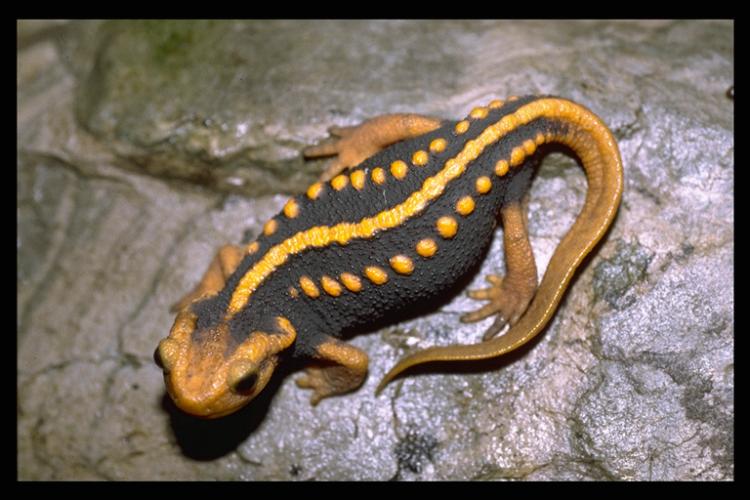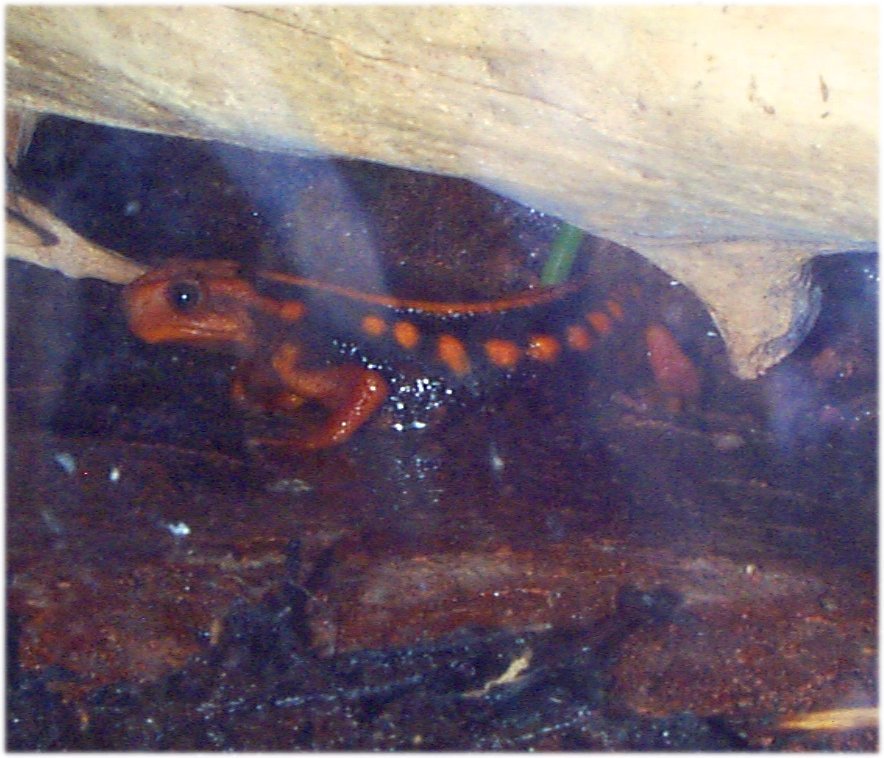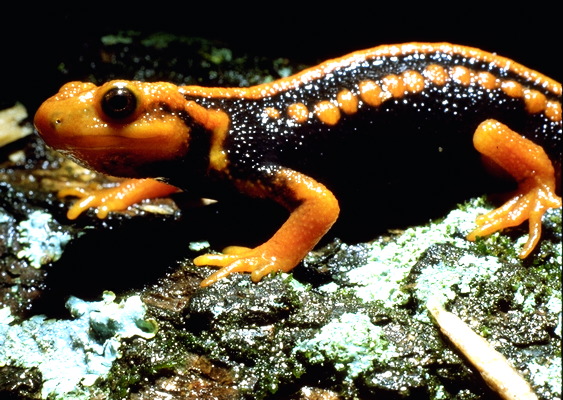
Photo courtesy of Hank Wallays |
Scientific Name: Tylototriton shanjing |
| Geographical Range: Yunnan Province in China, Northern Thailand and India. | |
| Habitat: Foothills of Mountains and Mountain Forest | |
| Diet in the Wild:Earthworms, pieces of fish and lean red meat. | |
| Conservation Status: Not endangered | |
| Location in the Zoo: Herpetarium | |
|
|
|
| Physical Description:
· The crocodile salamander is small, averaging
between 6 and 8 inches in length.
|
General Information:
Crocodile Salamanders are aquatic and terrestrial. They are very active. During most of the year, these newts will usually remain aquatic. And like most newts, they have a very keen sense of smell, which enables to find uneaten food. Humans use the salamander for medicinal purposes by drying it and many of these salamanders are caught each year for their colorful skin to be traded in the pet industry. The salamander has a life span of 12 years. They are nocturnal, timid and non aggressive. Crocodiles Newts can reach sexual maturity in a year, usually whenever they are about five inches in length. Males are usually more brightly colored than females. The tail of the male is usually larger than that of the female. |
| Special anatomical, physiological
or behavioral adaptations:
The Crocodile Salamander live primarily in mountain forests and foothills of mountains, often resting on roots or branches hanging over the water. If disturbed or threatened, the salamander will drop into the water and quickly swim away. The crocodile salamander has a long tail that help it to swim through the water. Their keen sense of smell allow it to search for food. They reproduce sexually, laying fertilized eggs. |
 |
| Reproductive Behavior:
To attract females, the Crocodile Newt would create scent trails. The male initiates courtship by rubbing the heads of females with his chin. The rubbing stimulates the female. Most of courtship for the Crocodile Salamander takes place in water. Fertilization occurs internally and during mating the salamanders use the cloaca, the chamber that opens into the animals digestive and reproductive tract. |
Personal Observations:
The Fort Worth Zoo houses one crocodile salamander. Due to its small size, the class carefully concluded that it was a baby salamander. Its habitat in the Herpetarium includes lots of vegetation with a small body of water in the middle. During the day, when it was visited it hid between the bushes. It was trying to avoid being by avoiding the light. It is active and measures about three inches. |

Photo couretesy of Univ. of Michigan |
Interesting Facts about
Crocodile Newts:
Crocodile Newts are not reluctant feeders, and large females can consume a considerable amount of food. The Crocodile Salamander is the most aquatic of the four species of crocodile newt. In the summer and autumn months the salamander will usually remain in the water and would rarely emerge. Also the Crocodile Newt is nocturnal, doing most of its hunting at night and remaining inactive during the day. |
| Sources Consulted:
1. Internet Mandarin Salamander 2. Internet Tylototriton verrucosus 3. Internet Univesity of Michigan 4. Internet Encarta 5. Internet Berkeley University 6. Book: Grzimek, Bernhardt. Grzimek Animal Life Encyclopedia. Van Nostrand Reinhold Company: New York, New York, 1974. 7. Book: Honders, John. The World of Reptiles and Amphibians. Peeble Press: New York, New York, 1975. |
Page Author: George Dubrocq
Mail Questions to: verdam@worldnet.att.net
or to mac@whozoo.org |